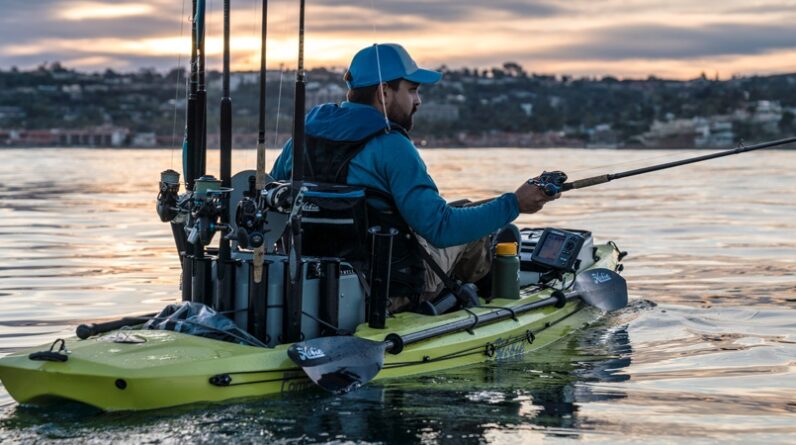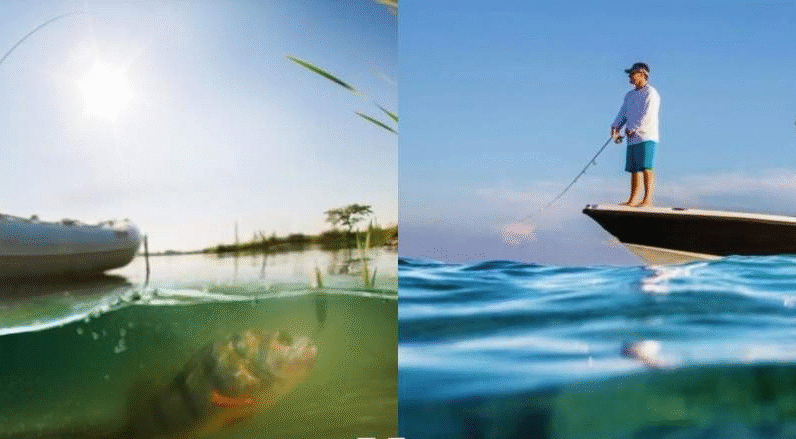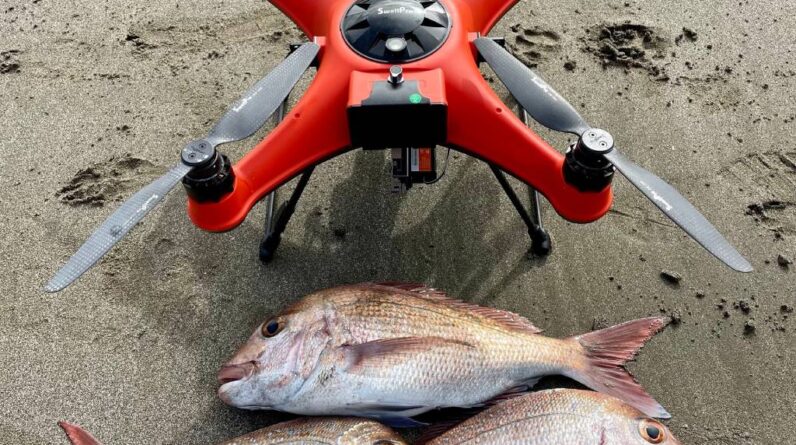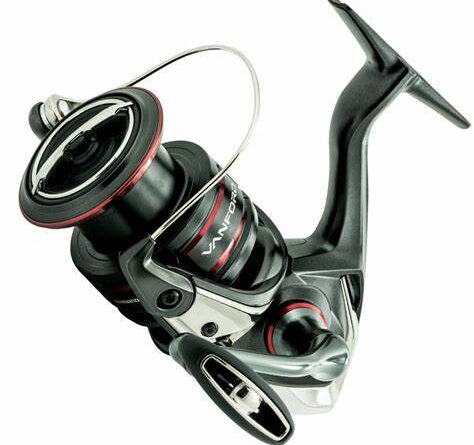After numerous journeys across the border, I have perfected my preparation for a fishing trip in Canada with a list of fishing gear essentials. Let me share it with you. The items I suggest are essentially the right fishing equipment for Canadian fly-in trips or places where you’ll be using a camp boat. If you’re towing a boat, the list of things to consider would be much longer.
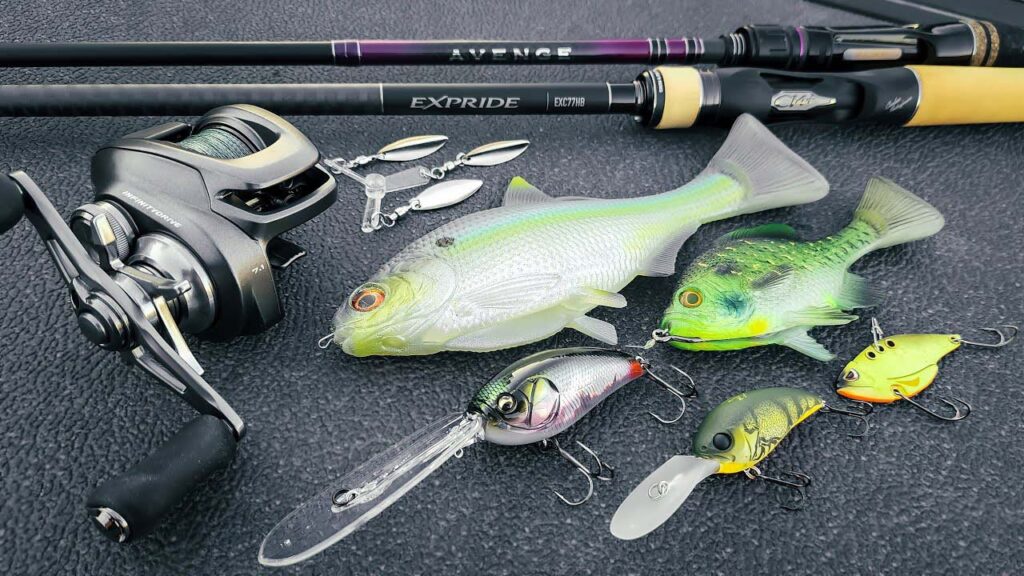
Must-have gear for fishing in Canada:
- Passport: You won’t be able to enter Canada without it.
- Drift sock: Typically, outfitter boats in Canada are around 14 to 16 feet in length, which means a smaller, conveniently packed sock is all that is required.
- Electronic device: Choose the one that displays all the information you need to know. Most batteries last several days during the warmer months. If you’re unable to charge batteries, it’s a good idea to turn off the device when you don’t really need it.
- Fishing rods: Restricting the number is the toughest task for me, but it’s necessary. Grab your ideal jigging rod. It’s a versatile one that you can also use for casting small crankbaits. A medium-heavy spinning rod that is 7 or 7 1/2-feet long is suitable for various fishing techniques such as twitch baits, jigging, bigger cranks, live-bait rigging, or surface lures. If there are large pike and muskies in the area, make sure to bring a muskie/pike casting rod along with a selection of Mepps, Suicks, big Rapalas, large deep-diving Yo-Zuri cranks, and Northland Bionic spinnerbaits. Don’t forget to pack a few large spoons.
- Husky Jerks always come along when I visit Canada. I bring a couple of X-Rap lures just in case.
- Required: Jigging Raps, Vexan Crystal Reapers, Shiver Minnows, Custom Jigs Rotating Power Minnows, Northland Puppet Minnows, and Lunkerhunt straight-up glide baits are all essential fishing lures for Canadian anglers.
- An additional spool filled with line for every reel. Grab an extra roll. Pack a 300-yard spool of the line you’ll use the most.
- Plastics: For 3.5- and 7-gram jigs, the 7.5-, 10- and 12.5-centimeter plastics from various brands are effective in catching smallmouth bass, walleye, and even northern pike that you could ever dream of. Northland Slurpees, Custom Jigs & Spins Ringworms, Gulp, PowerBait, Lunkerhunt Bentos, or your other favourite fishing baits will be just what you need for a successful fishing trip. Ringworms, paddle tails, and grub tails are all great options.
Please verify the regulations regarding the use of live bait in Canada. If using live bait boosts your confidence (and it’s allowed in the area you’re going to), go ahead. But, I haven’t used or taken bait in Canada for many years. Don’t forget, if you’re thinking of bringing live bait, you’ll need to make sure you have the necessary means to keep the bait alive and squirming in your fishing equipment.
Must-Have Lures for Catching Fish in Canada:
- A variety of crankbaits: Bagley, Rapala, Bay Rat, and Yo-Zuri are some of my top picks. Choose some activities that are suitable for the beginning of the year or when waves crash on the shores, islands, points, or reefs. Bring along some lures that can dive down to 20 feet.
- Using bottom bouncers with spinner harnesses and 6-inch plastic worms.
- Topwater lures
- Use pre-made wire leaders or create your own using Tyger wire or Cortland Critter wire. I always use fishing line, because northern pike enjoy biting on anything I cast. I connect directly to fishing lures, but I make my own 15-pound leaders for crankbaits with a swivel on one end and a snap on the other.
- Spoons will reflect light with random movements to attract fish. Northern pike is known to be attracted to these.
- Spinners will spin and cast light in every direction, just like a smaller fish or prey, and work well for catching bass.
- Using live bait can be quite inconvenient when travelling, so it’s better to opt for more easily portable alternatives for your trip. Both hard and soft baits are essential additions to your tackle box.
- Jigs are a type of fishing equipment that brings together your bait and hook. They are designed to entice fish by mimicking movement rather than using light. They’re great for catching walleye; opt for 1/2 to 5/8 oz. for our area.
Spoons will reflect light with random movements to attract fish. Northern pike is known to be attracted to these.
Spinners will spin and cast light in every direction, just like a smaller fish or prey, and work well for catching bass.
Using live bait can be quite inconvenient when travelling, so it’s better to opt for more easily portable alternatives for your trip. Both hard and soft baits are essential additions to your tackle box.
Jigs are a type of fishing equipment that brings together your bait and hook. They are designed to entice fish by mimicking movement rather than using light. They’re great for catching walleye; opt for 1/2 to 5/8 oz. for our area.
Ensure that spinnerbaits have a closed-loop line tie. The spinnerbaits with a bass-style and a “R” bend don’t work well with wire leaders.
Please verify any restrictions on fishing hooks. Certain areas may require the use of single hooks instead of treble hooks. In Canada, it is common for various regions and even entire provinces to require the use of barbless hooks on the lures attached to your fishing rod. Use needle-nose pliers to crimp down the barbs. Ensure that all your fishing equipment and gear are in excellent condition before embarking on your trip.
Must-Have Equipment for Your Canadian Fishing Adventure
- Assorted items: Pliers, hook remover, mouth-spreader, hook sharpener, fillet knife, pocket knife, camera, measuring tape, collapsible net, sunblock, polarized sunglasses, rain gear, handheld GPS and spare batteries, compass, watch, case of water, turtleneck, Under Armour thermal tops and bottoms, hoodie, wind pants, flannel shirt.
- Plastic trays for packing equipment and fishing gear. Secure your luggage with duct tape to ensure safe transportation.
- An additional set of reading glasses. I need them, so I suggest getting some additional items.
Suitcase Packing List for Fishing Trips in Canada
- Long-sleeved and short-sleeved shirts are popular clothing options among Canadians. These types of shirts are commonly worn to suit different weather conditions and personal style preferences.
- Shorts, trousers, and zip-off trousers if you prefer
- Fleece jacket and fleece pants.
- Wool or down jacket.
- Water-resistant parka and pants
- Base layers, like long underwear or athletic liners.
- Waterproof gloves and glove liners. They’re great for keeping your hands dry and warm, especially during those chilly Canadian winters. Whether you’re shovelling snow, ice fishing, or just braving the cold, these gloves are a must-have. So
- Sunnies and toque
- Various weights of socks are available for purchase. These different weights cater to the preferences and needs of individuals.
- Comfy, laid-back shoes for hanging out at the lodge
- Waterproof boots are a great investment for Canadians, especially during our wet and snowy seasons. These boots are designed to keep your feet dry and protected
- Sunscreen, insect repellent, and other personal care products
Other Fishing Gear to PackPicture of the Canadian fish, northern pike.
- Rods: 6- or 6.5-foot medium for walleye and 6- or 7-foot medium-heavy for northern pike. A medium-heavy rod with a fast action tip and a minimum weight of ¾ oz is perfect.
- Reels for every fishing rod, plus an additional one. Make sure to pack an additional spool of fishing line for each fishing reel and bring extra of the line that you will use the most. Avoid using monofilament fishing line as it tends to have excessive stretch and can break easily. Stick with 9 to 23-kilogram test braided line.
- Leaders (for pike) should be of excellent quality, measuring 9 to 12 inches in length, and with a test strength ranging from 60 to 100 pounds.
- Ball bearing swivels are a type of device that is commonly used in various applications. These swivels consist of a series of small metal balls enclosed within a housing, allowing for
- Hand towel, also known as a facecloth or washcloth, is a small absorbent towel that is commonly used for drying hands or face.
- Flashlight and batteries are essential items that every Canadian should have on hand. Whether you’re camping in the great outdoors, experiencing a power outage, or simply need some extra light in a
- First aid supplies. You’ll want to have some pain reliever, moleskin, and bandaids on hand, just in case.
- Water-resistant bags like Ziplock
Keep it underweight
You’d be surprised at how all this equipment can be packed within the weight limits for a fly-in. It’s easy to carry around. Capture photos of everything and share your incredible adventure with everyone!

